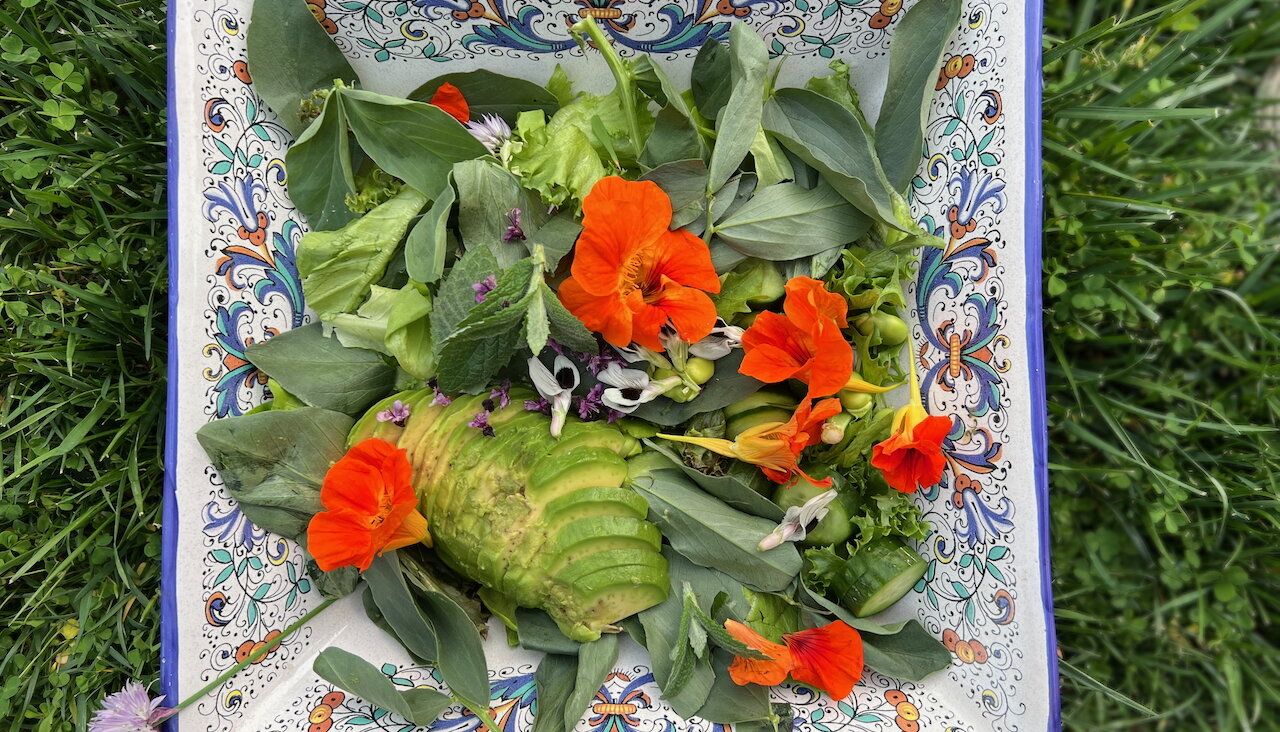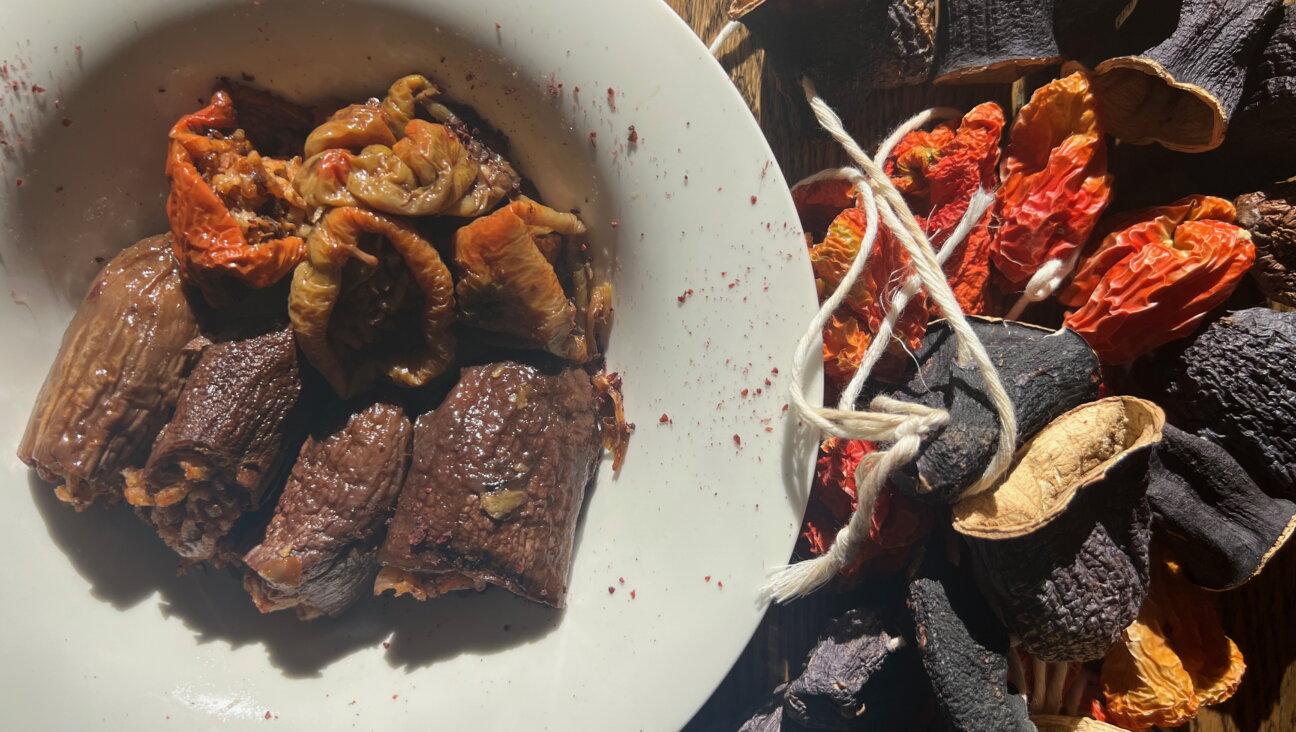Top 10 Kosher Meat Mysteries — Solved!

Kosher beef diagram. Image by iStock
Kosher has become hip in recent years, for a variety of reasons. But for those who didn’t grow up in a kosher home and may be new to the laws of kashruth, the rules can be confusing — especially when it comes to purchasing beef. Whether we’re grilling in the summer or making a heartwarming pot roast for the holidays, it’s helpful to know some of the basics. Here are ten tips for understanding kosher beef:
1. Which animals are used for kosher meat?

A herd of cows. Image by Anders Gustavson/Flickr
Any large animal that both chews its cud and has split (cloven) feet is permitted under the laws of kashruth. Beef and lamb are the most common kosher meats (goat, sheep and deer are also suitable).
2. Why is kosher beef so expensive?

After draining the chicken of blood, Grow and Behold founder and owner Naftali Hanau removes the rest of the blood by coating it in kosher salt. Image by News21-National/Flickr
The process of koshering beef is labor-intensive and time consuming. First, the slaughter must be done in a humane manner (shechita) by someone (called a shochet) who is trained to butcher the animal in accordance with the laws of kashruth. In addition, after slaughter, the animal is checked to be sure it was healthy: If there is any apparent disease, broken bones or scars/adhesions, the meat is considered unfit. The net yield of healthy, properly slaughtered meat is anywhere from 20%–40% compared to treyf (non-kosher) meat. Finally, kosher meat must be soaked and salted to rid the animal of blood prohibited by the Torah. Because of all of these steps, kosher meat prices are pricey.
3. Where does each cut come from?
There are five “primal” kosher cuts that are carved from the front half (forequarters) of the cattle: chuck, rib, brisket, plate and shank. These large pieces are then butchered into smaller, subprimal cuts such as short rib, club steak and silvertip roast.
4. What are the expensive cuts?
Some of the most expensive cuts are: rib steak or roast, ribeye, Delmonico steak, “Brick” (chuck eye; shell; French) roast, “surprise” steak (rib cap) and first-cut brisket.
5. What are the cheaper cuts?
These are more economical beef cuts: kalichel, flanken, top-of-rib, chuck steak, deckle.
6. Which cuts are best for what?

Delmonico Steak. Image by John D/flickr
Rib is tender and benefits most from dry-heat cooking such as grilling, broiling and roasting. One exception is deckle (from the top of the rib), which is best as pot roast, stew or cholent.
Chuck is flavorful but can be tough. In order to make it juicy and tender most portions should be braised, stewed or otherwise cooked with liquid (or liquid-loaded vegetables) slowly and at low heat. Chuck is often cut up for stew meat and ground for burgers. On the other hand, some chuck cuts are butchered in a way that makes them fine for grilling/broiling (chuck minute steak, sometimes called filet split) or roasting (silvertip).
Brisket is tough and always requires long, slow cooking in moist heat (braise, pot roast, stew).
Plate is a fatty cut from the belly, just below the rib, and includes skirt steak, hanger steak and short rib. It’s good for braising, although the steaks also benefit when marinated and quickly grilled.
Shank, from the leg, is tough, dry and sinewy, so is best when braised or used for soup and stock.
- Is London broil a cut?
No, it’s a way of cooking beef, usually by marinating the meat, then grilling it, then slicing it across the grain. Most kosher London broil is cut from the chuck; it can be a flatiron steak, minute London broil or simply sold as “London Broil,” depending on the butcher.
8. Can you substitute a cheap cut for an expensive one?
That depends. Certain cuts, such as first-cut brisket, will contract like rubber over the high dry heat of a grill. It won’t ever replace a tender rib steak. However, chuck is very flavorful, so a quickly broiled chuck steak, while a bit chewy, can be extremely satisfying, as can a chuck roast, and they are less costly than rib portions. Marinated London broil is another way to cook a less expensive “steak;” skirt steak and hanger steak are generally less expensive than rib steak. Deckle and kalichel are delicious, less costly alternatives to brisket for pot roast. Silvertip is less expensive than rib, but makes a delicious oven roast.
9. Should you salt kosher meat?

Kosher salt. Image by stlbites.com/flickr
Assuming you have no health issues, the answer is yes, but use less than for non-kosher meat. Salt brings out flavor. Kosher meat has been soaked and salted, but also rinsed, and the salt does not penetrate deeply.
10. Is filet mignon kosher?
Maybe. Steaks such as true filet mignon, New York Strip, porterhouse, sirloin and others, come from the loin, in the back half (hindquarters) of the animal. (Some kosher butchers sell mock “filet mignon” but it is actually the center of the rib.) The hindquarters contain forbidden fats and the sciatic nerve, both of which are difficult and time-consuming to remove and have been considered too costly to kosher (they are sold to non-kosher markets). In Israel, where the non-kosher market is small, the animal is koshered “from nose-to-tail,” and now, several producers in the United States have begun to offer hindquarter beef that has been koshered in a process known as nikkur, under strict supervision: Grow and Behold, KOL Foods, Atara Foods and Bisra Meats.
Ronnie Fein is a cookbook author, food writer and cooking teacher in Stamford, Connecticut. She is the author of “The Modern Kosher Kitchen” and “Hip Kosher.” Visit her food blog, Kitchen Vignettes, and find her on Facebook, Twitter and Instagram
The Forward is free to read, but it isn’t free to produce

I hope you appreciated this article. Before you go, I’d like to ask you to please support the Forward.
Now more than ever, American Jews need independent news they can trust, with reporting driven by truth, not ideology. We serve you, not any ideological agenda.
At a time when other newsrooms are closing or cutting back, the Forward has removed its paywall and invested additional resources to report on the ground from Israel and around the U.S. on the impact of the war, rising antisemitism and polarized discourse.
This is a great time to support independent Jewish journalism you rely on. Make a gift today!
— Rachel Fishman Feddersen, Publisher and CEO
Support our mission to tell the Jewish story fully and fairly.
Most Popular
- 1

Fast Forward Ye debuts ‘Heil Hitler’ music video that includes a sample of a Hitler speech
- 2

Opinion It looks like Israel totally underestimated Trump
- 3

Culture Cardinals are Catholic, not Jewish — so why do they all wear yarmulkes?
- 4

Fast Forward Student suspended for ‘F— the Jews’ video defends himself on antisemitic podcast
In Case You Missed It
-

Culture How one Jewish woman fought the Nazis — and helped found a new Italian republic
-

Opinion It looks like Israel totally underestimated Trump
-

Fast Forward Betar ‘almost exclusively triggered’ former student’s detention, judge says
-

Fast Forward ‘Honey, he’s had enough of you’: Trump’s Middle East moves increasingly appear to sideline Israel
-
Shop the Forward Store
100% of profits support our journalism
Republish This Story
Please read before republishing
We’re happy to make this story available to republish for free, unless it originated with JTA, Haaretz or another publication (as indicated on the article) and as long as you follow our guidelines.
You must comply with the following:
- Credit the Forward
- Retain our pixel
- Preserve our canonical link in Google search
- Add a noindex tag in Google search
See our full guidelines for more information, and this guide for detail about canonical URLs.
To republish, copy the HTML by clicking on the yellow button to the right; it includes our tracking pixel, all paragraph styles and hyperlinks, the author byline and credit to the Forward. It does not include images; to avoid copyright violations, you must add them manually, following our guidelines. Please email us at [email protected], subject line “republish,” with any questions or to let us know what stories you’re picking up.















